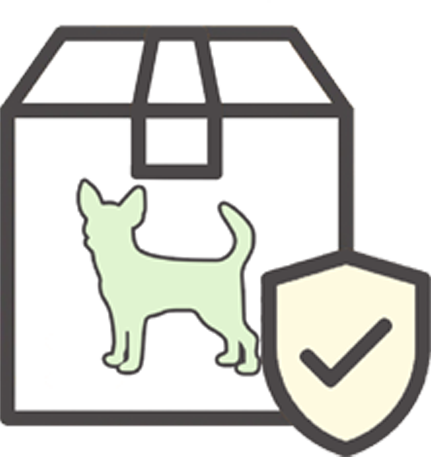6 Tips for Training an American Staffordshire Terrier
Friday, April 05, 2019 10:52:02 AM America/Los_Angeles
The American Staffordshire Terrier is known by many names, including Pit Bull Terrier, Pit Dog, American Terrier, and Yankee Terrier. The Staffordshire Terrier originated in Staffordshire, England during the 19th century. Before these pups were show dogs, they were used for fighting due to their strong muscular build, chiseled teeth, and thick bone structure. The Staffordshire Terrier didn't come to America until 1870, which was when they were given the name American Staffordshire Terrier, also known as Amstaff.
1. Getting to Know the American Staffordshire Terrier
Amstaff have a lifespan that ranges from 9 to 15 years, and they belong to the AKC Terrier group. They can be anywhere from 16 to 19 inches in height and can weigh anywhere from 57 to 67 pounds. As far as temperament is concerned, Amstaffs are docile, friendly, playful, and sometimes clingy creatures. They need cuddle time to know they are loved and appreciated. These dogs have a lot of energy, so they will do well living in a home with children and a home that has a large yard.
2. Staffordshire Terriers and Their Diet
Staffordshire Terriers need high-quality dog food, and the first ingredient of the food should be meat. Staffordshire Terriers that are 8 to 12 weeks old should have four meals in a 24-hour period. Three to 6-month-old Amstaffs should have three meals per day. Amstaffs that are 6 months to a year old should have two meals per day. When the Staffordshire Terrier has their first birthday, one bowl of food every 24-hours is ideal.
3. Training an American Staffordshire Terrier
The Amstaff can be stubborn and is a remarkable pack dog, so you need to be stern when training them. Training needs to start immediately. Failing to show your pup whose boss will backfire quickly. You need to remain in control. You need to decide whether you want your pup to use the bathroom inside or outside of your home. Potty training your dog is not what it used to be. Pee pads are still useful, but you can upgrade them if you want by using DooggieLawn. This is a great option if you feel you will have difficulty getting up multiple times of day and night to take your pup out to use the bathroom. What makes DoggieLawn different? DoggieLawn does all the work for you. Potty pads are not bad to use, but they are not eco-friendly like DoggieLawn. This product is real grass, which dogs are naturally attracted to! There is no mess and no odor to try and mask.
4. Grooming and Bathing Care
Amstaffs have a short, flat coat of fur, even during the winter, and they should be thoroughly groomed in 4 to 8-week intervals. These thorough cleanings involve clipping their nails, cleaning their ears, checking the anal glands, and the coat and skin to make sure everything is clean. When cleaning the ears of an Amstaff, you should only clean as far as you can see. Going further than this can damage the dog's ears and cause frequent ear infections. When you're washing your dog's eyes, make sure there is no foreign matter present, such as mucus or anything else. It's okay to wash their eyes while they're taking a bath. Your dog's eyes should remain bright and alert.

5. Praise During Training
Like any dog, praising your Amstaff during training is rewarding for you and them. Praising your pup during training helps them understand your expectations and the differences between the things they should be doing and shouldn't do. Even when you take your pup out to use the bathroom, when they pee or poop, praise them and reward them with a treat, this way, they know they are supposed to use the bathroom outside. If you prefer to use DoggieLawn for housebreaking purposes, you can still reward your furry pal with treats and congratulations, so they know this is something they are supposed to do. Once your pup understands what's expected, it will be second nature to do what you have asked of me. When you're training your pup, you are programming them to meet your expectations, so it's important to be consistent.
6. Cuddle Time and Appreciation
Set aside a few minutes to cuddle with your furry friend every day. 5 to 10 minutes of cuddle time and appreciate lets your dog know you care about them and appreciate them being with you. Cuddle time is good for you too! Turn off the TV and any other distractions and spend quality time with your pup.
Your pup is like a person with fur. When you're training your dog, be stern when they have done something bad and appreciative and happy when they do what they are supposed to. Your dog can distinguish between the tones in your voice and quickly learn what their role in your home is.


